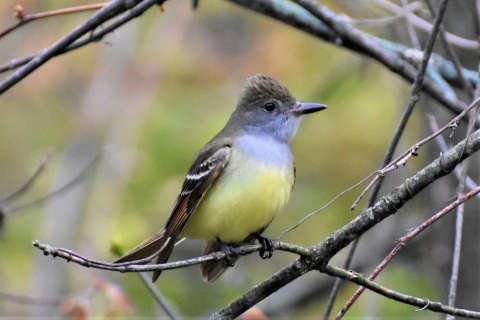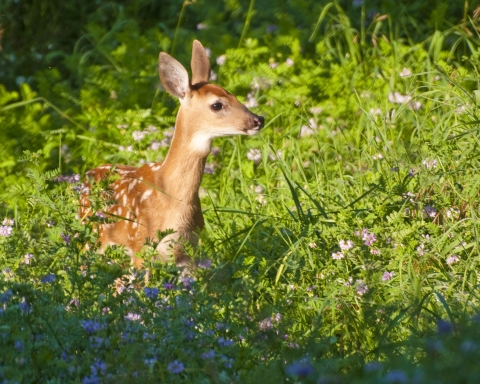Seasons of Wildlife
Neotropical Songbirds
In the spring, neotropical migratory songbirds such as the white-eyed vireo, hooded warbler, and indigo bunting arrive on the refuge to take advantage of the highly nutritious and abundant insect populations. Neotropical songbirds breed on the refuge, raise their chicks, and then return to their wintering grounds in central and south America during the early fall.
Migratory Waterfowl
Soon after the neotropical songbirds leave, migratory waterfowl begin to arrive in the late fall to spend the winter feeding, resting, and establishing pair-bonds. Because the refuge is situated in an area where the Mississippi and Central flyways overlap, waterfowl species from both flyways can be observed. The most common species that winter here are mallards, gadwall, green and blue-winged teal, ring-necked ducks, and northern pintail.
White-tailed Deer
White-tailed deer are common on the refuge and can likely be seen any time of the year. Dawn and dusk are the primary times to most wildlife. Deer can be seen in woodland habitats, crossing the road, or at the edge of roads. Does normally begin dropping fawns in early May. Bucks begin growing their antlers in the spring and will have hardened antlers by mid-August.
Featured Species
An outstanding diversity of flora and fauna live on the refuge. Seasonally flooded bottomlands, oxbow lakes, and sloughs provide excellent habitat for wintering migratory waterfowl. These wetlands also provide nesting habitat for wood ducks, rookeries of wading birds, and alligators. While many species spend only a few months on the refuge, some examples of our permanent residents include white-tailed deer, wild turkey, grey and fox squirrels, rabbits, grey and red foxes, coyotes, beavers, opossums, river otters, bobcats, and many small rodents.


